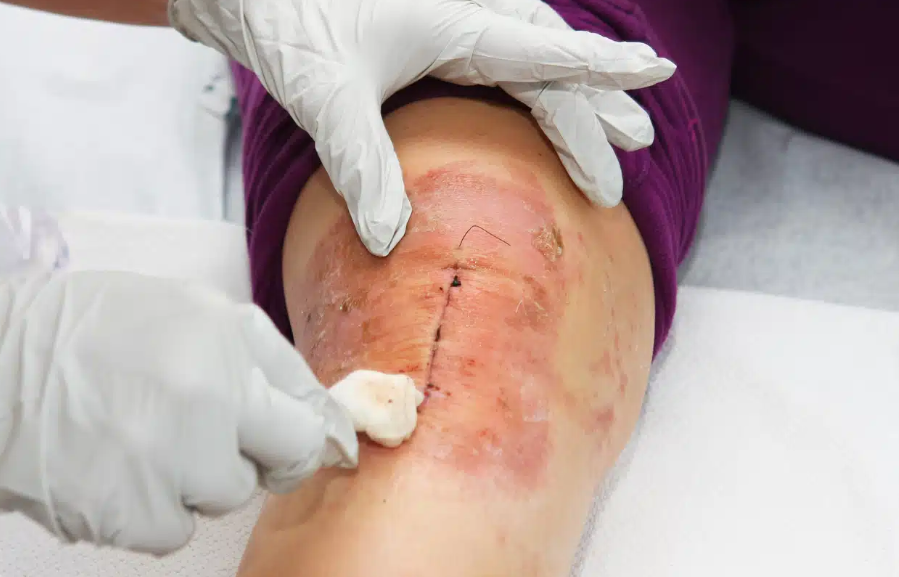Key Takeaways
- Robotic-assisted knee surgery enhances precision and reduces recovery time.
- Innovations in technology continue to improve surgical outcomes.
- Patients should consult healthcare professionals to learn about surgery’s benefits.
Knee surgery has evolved tremendously over the past few decades. Today, those facing knee replacements have an option that combines precision technology with top-tier surgical expertise—robotic-assisted knee surgery. This innovative approach provides numerous benefits that are shaping the future of orthopedic treatment. For instance, with the advent of the Mako robotic knee replacement in Tulsa, patients benefit from surgeries that minimize invasiveness and optimize results. These groundbreaking procedures stand to improve recovery outcomes and pave the way for new standards in personalized patient care.
Mako robotic knee replacement in Tulsa offers a highly precise and personalized approach to knee surgery, using advanced robotics to ensure optimal alignment and improved outcomes. This minimally invasive technique can lead to faster recovery times and less post-operative pain compared to traditional knee replacement methods. Patients in Tulsa benefit from the Mako system’s ability to customize the procedure based on individual anatomy, enhancing both the accuracy and longevity of the knee implant.
Robotic-assisted surgeries seamlessly blend cutting-edge robotics with the nuanced skills of surgeons. This integration results in procedures that are not only highly precise but also tailored to meet the unique anatomical specifications of each patient. The growing acceptance and use of this technology underscore its transformative impact on the landscape of surgical interventions.
The Evolution of Knee Surgery Techniques
Historically, knee surgeries involved significant manual intervention, where outcomes heavily depended on a surgeon’s skill. Traditional surgical techniques, while effective, posed challenges such as longer recovery times and potential misalignment of implants. Robotic-assisted surgery emerged as a pivotal advancement, incorporating technology to address these limitations. By employing robotic systems, surgeons can achieve unmatched precision and consistently favorable results, setting new benchmarks in surgical excellence.
Benefits of Robotic-Assisted Surgery
One of the standout benefits of robotic-assisted surgery is its enhanced precision. Robotic systems help achieve optimal implant placement, which is crucial for the success and longevity of knee replacements. This precision significantly reduces the likelihood of post-surgical complications and enhances joint functionality. Studies, such as those found in research-backed evidence, highlight that patients report reduced pain and faster recovery times, enabling them to quickly return to their normal activities. Such outcomes underscore the efficacy of integrating technology into surgical procedures.
How Robotic Technology Works in Surgery
Robotic assistance in surgery starts well before the actual procedure. Detailed pre-surgical planning uses advanced imaging to create 3D models of the patient’s knee, enabling surgeons to plan the surgery with precision. During the procedure, the robotic system provides real-time guidance, ensuring the execution of the plan with pinpoint accuracy. Patients experience significant benefits, including minimized tissue damage and precise alignment of implants. Real-life examples abound, with numerous patients experiencing less discomfort and shortened recovery periods compared to those undergoing traditional surgical methods.
Addressing Common Concerns and Misconceptions
Despite its advantages, robotic-assisted surgery is sometimes met with skepticism. Common misconceptions include doubts about the technology’s reliability and effectiveness. However, extensive testing and robust safety records support the idea that these systems are incredibly safe and deliver consistent outcomes. Additionally, the involvement of highly skilled surgical teams in navigating these technologies ensures procedures maintain the highest standards of care.
Emotional and Financial Considerations
Beyond physical recovery, knee surgery can have significant emotional impacts. Faster recovery benefits the patient and alleviates stress for their families. Emotionally, patients who recover swiftly experience a renewed sense of independence and improved quality of life. From a financial perspective, understanding the cost and insurance coverage is essential. Many insurance providers are beginning to recognize the long-term benefits of robotic-assisted surgeries, offering coverage that offsets the costs associated with these advanced procedures.
Future Directions in Robotic Surgery Technology
The realm of robotic-assisted surgery is rapidly advancing. Experts predict that further developments will refine surgical robots’ capabilities, making these procedures even more accurate and widely applicable. The ongoing research trends and developments are promising, with future innovations likely to extend robotic assistance beyond knee surgeries, potentially transforming various medical specialties across the healthcare continuum.
How to Determine If Robotic Surgery Is Right for You
Deciding to undergo robotic-assisted knee surgery involves many considerations. Patients should engage in detailed conversations with their healthcare providers to gain clear insights. Key aspects include understanding patient eligibility, anticipated recovery timelines, and potential risks. Personal factors such as individual health conditions, lifestyle demands, and personal preferences should guide this decision-making process.
Patient Stories and Testimonials
Hearing from patients who have experienced robotic-assisted knee surgeries can offer valuable perspectives. Many individuals share stories of vastly improved recovery experiences, highlighting significantly less post-operative pain and a rapid return to daily activities. These firsthand accounts underscore the transformative impact of robotic-assisted surgery on patient outcomes, providing reassurance and insight into what future patients might expect.
Conclusion
In conclusion, robotic-assisted knee surgery represents a significant leap forward in orthopedic care, offering enhanced precision and faster recovery times. This cutting-edge technology, combined with skilled surgeons, has set a new standard in surgical excellence, providing personalized treatment options that improve patient outcomes. As innovations continue to advance, robotic surgery promises to revolutionize not only knee procedures but various other medical treatments, paving the way for improved patient care across the healthcare field.

